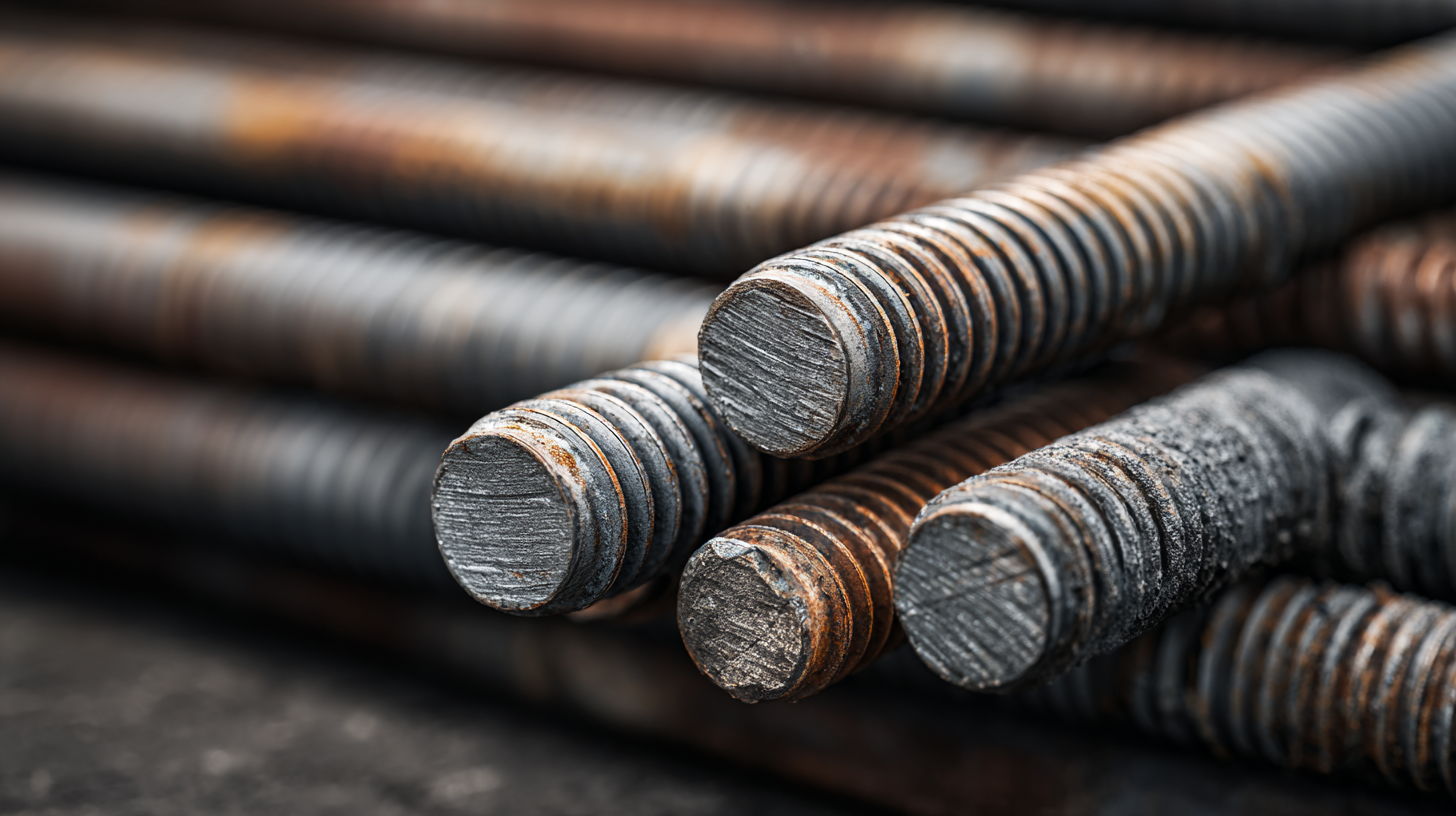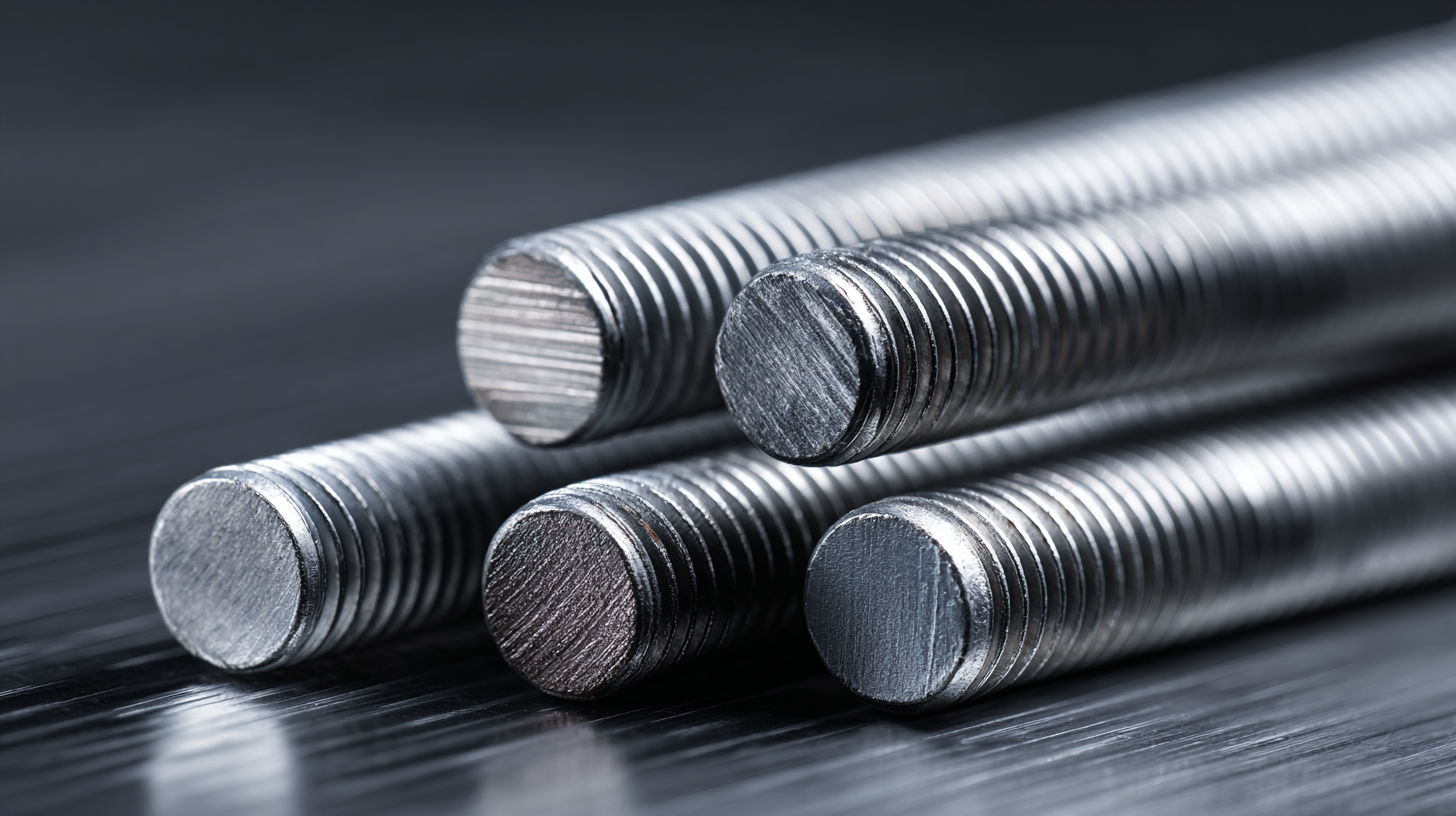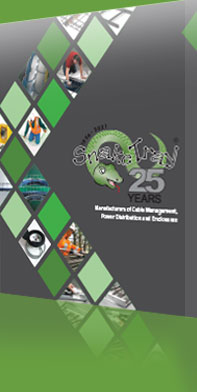How to Choose the Best Threaded Rod for Your Global Sourcing Needs
In the global sourcing landscape, selecting the right threaded rod is crucial for ensuring structural integrity and performance across various applications. According to a recent industry report by MarketsandMarkets, the global fasteners market is projected to reach USD 150.25 billion by 2025, with threaded rods being a significant component due to their versatility and reliability in construction and manufacturing.

As businesses strive for efficiency, understanding how to evaluate post-sales services and repair costs becomes essential. This not only affects the overall operational budget but also influences production timelines and product quality. A carefully chosen threaded rod can mitigate risks associated with sourcing and assembly, making it imperative for companies to discern which options meet both quality standards and cost-effectiveness. Thus, this guide aims to help businesses navigate the complexities of sourcing threaded rods, emphasizing the importance of thoughtful selection to optimize their sourcing strategies.
Understanding the Different Types of Threaded Rod Materials for Various Industries
When selecting the best threaded rod for your global sourcing needs, understanding the various materials available is crucial for different industries. Threaded rods are typically made from materials such as steel, stainless steel, and plastic, each offering unique properties that cater to specific requirements. Steel is favored for its strength and durability, making it ideal for heavy-duty applications in construction and manufacturing. On the other hand, stainless steel provides excellent corrosion resistance, making it suitable for environments where exposure to moisture or chemicals is a concern.
The growing market for plastic fasteners also warrants attention, as lightweight and corrosion-resistant materials become increasingly popular in various applications. These fasteners are particularly advantageous in sectors looking to reduce weight without compromising on performance. As industries continue to evolve, understanding the benefits and limitations of each material can help businesses make informed decisions when selecting the right threaded rod, ensuring that their products meet both functional and regulatory standards.
Comparison of Threaded Rod Materials for Various Industries
This chart illustrates the usage of different materials for threaded rods across various industries. The data shows how prevalent each material is in specific sectors, helping global sourcing decisions.
Key Considerations When Sourcing Threaded Rods Globally
When sourcing threaded rods globally, there are several key considerations that can significantly influence the success of your procurement process. First and foremost, the material composition of the threaded rod is crucial. Depending on the application, you may require rods made from stainless steel, carbon steel, or other alloys that offer specific properties such as corrosion resistance or high tensile strength. Evaluating the material will ensure that the threaded rods meet the performance expectations of your project.

Industry-Specific Applications of Threaded Rods: Construction, Automotive, and Beyond
Threaded rods are essential fasteners used across various industries, with significant importance in construction and automotive sectors. According to a report from Research and Markets, the global construction fasteners market is projected to reach $44.39 billion by 2027. As infrastructures become more complex, the demand for robust and reliable threaded rods escalates. These rods provide critical support in structural elements, ranging from securing beams to anchoring foundations, making their material and design choices crucial for safety and durability.
In the automotive industry, threaded rods are vital for assembling vehicle components. The automotive sector, which is expected to reach a value of $3.9 trillion by 2025, heavily relies on threaded rods for structural integrity and performance. As electric vehicles gain prominence, the materials used, such as high-strength steel and corrosion-resistant alloys, are evolving to meet new requirements. Utilizing threaded rods that comply with industry standards, like ASTM A193 for high-temperature applications, ensures that automotive manufacturers can deliver reliable and safe vehicles while adhering to stringent regulatory policies.
Quality Standards and Certifications for Threaded Rods in Global Markets
When selecting threaded rods for your global sourcing needs, understanding the quality standards and certifications is crucial. These standards ensure that the products meet specific performance benchmarks, allowing for consistency and reliability across various applications. For instance, ISO 9001 certification indicates that a manufacturer adheres to international quality management principles, which can significantly impact product durability and safety.
**Tips:** Always request documentation of certifications from suppliers. Verify that they comply with relevant international standards, such as ASTM, DIN, or JIS, which can vary by market. Ensuring that the product has been tested to meet these standards can prevent potential issues in application and enhance overall satisfaction with your sourcing decisions.
Proper inspection and traceability are also essential components of quality assurance. A threaded rod that meets required specifications should come with a certificate of conformity, detailing material properties and mechanical performance. This documentation can assist you in maintaining compliance with industry regulations while avoiding costly mistakes in material selection.
**Tips:** Establish a relationship with suppliers who prioritize transparency; engage in regular communication about their production processes and quality control measures. Additionally, conducting third-party audits or inspections can provide further confidence in the efficacy of the sourced products.

Cost-Effective Strategies for Global Sourcing of Threaded Rods
When sourcing threaded rods globally, cost-effectiveness plays a crucial role in decision-making. Understanding market trends, comparing supplier prices, and factoring in shipping costs can help you identify the most affordable options without compromising quality. Don't forget to leverage the potential of bulk purchasing; many suppliers offer discounts for larger orders, which can significantly reduce your overall expenditure.
Tip: Always request samples before committing to a larger order. This allows you to assess the quality of the threaded rods and ensure they meet your specifications. Additionally, maintaining an open line of communication with your suppliers can lead to better negotiation opportunities and potential price reductions.
Another effective strategy is to utilize local sourcing options when possible. Local suppliers may have lower shipping costs and reduced lead times, making them a viable choice for urgent projects.
Tip: Create a comprehensive supplier database to keep track of potential vendors and their pricing structures. This can assist in quickly identifying the best deals and foster competitive pricing among suppliers, ultimately leading to more cost-effective sourcing for your threaded rod needs.
How to Choose the Best Threaded Rod for Your Global Sourcing Needs - Cost-Effective Strategies for Global Sourcing of Threaded Rods
| Material | Diameter (mm) | Length (mm) | Item Weight (kg) | Country of Origin | Price per Unit (USD) |
|---|---|---|---|---|---|
| Stainless Steel | 10 | 1000 | 0.5 | China | 1.20 |
| Carbon Steel | 12 | 1500 | 0.9 | India | 0.85 |
| Aluminum | 8 | 800 | 0.3 | Germany | 2.00 |
| Brass | 16 | 1200 | 1.2 | USA | 1.75 |
| Alloy Steel | 14 | 2000 | 1.5 | Japan | 1.90 |
